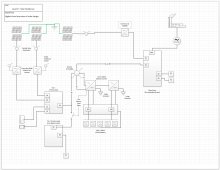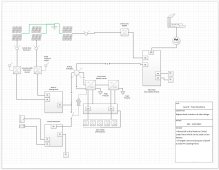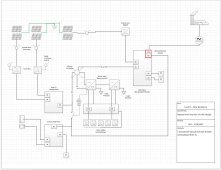Hedges
I See Electromagnetic Fields!
- Joined
- Mar 28, 2020
- Messages
- 20,535
I'm almost embarrassed to ask this question on battery that's confusing me. In SMA docs and your and Hedges references everything is Lithium Ion. I have never seen a reference to LiFePo4 Lithium Phosphate, always Lithium or Lithium Ion.
So, does SMA support Lithium Phosphate batteries?
LiFePO4 is just one of many lithium ion chemistries.
Sunny Island is compatible with many chemistries, so long as max/min voltage it can deliver is suitable for the pack.
Couple years ago when I was making my selection, only a couple brands were listed. One was LG RESU. Some units of that model were later recalled for fires (it is an "explody" chemistry).
Using the REC BMS, people build packs around LiFePO4 which is also compatible.
Given a BMS and communication, Sunny Island just knows what voltage and current to deliver, is agnostic to chemistry.
Lead-Acid (wet or VRLA) and Ni-CD, battery management is performed by Sunny Island.
At the time, I didn't know about DIY LiFePO4. LG RESU was about 5x the price of SunXtender AGM, and 5x the cycle life. For my grid-backup application I only anticipate a couple hundred cycles, so I went with the cheaper option. FLA would have been even lower purchase price (and might last 20 years rather than 10), but I wanted zero maintenance.
SMA says minimum 100 Ah for lead-acid (50 Ah for lithium), and recommends 100 Ah for each 1kW of GT PV. This probably has to do with stuffing excess power into the battery for a couple seconds during "load dump", when a large load has just turned off and frequency shift hasn't reduced PV output. My battery is about 1/3 that size. Lead-acid of course is more forgiving, while lithium voltage might shoot up if near full.
If you use lithium, look into a precharge solution. One would think the list of SMA compatible batteries has been tested. A forum member Pyrofx uses LiFePO4 with REC and external Gigavac relay for Sunny Island. Inrush current has welded relay contacts. Inrush is an issue with many brands of inverters and at least some batteries. There is a thread on Signature Solar, who resell a product with precharge circuit integrated, and some fraction of customers representing practically all known inverter brands find it won't power up. BMS disconnects due to excessive current. A simple switch in series with resistor, closed to precharge capacitors before closing main switch, ought to work. But not if inverter starts sucking current early, and not if BMS disconnects then reconnects later.





